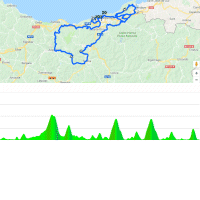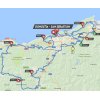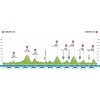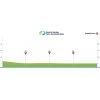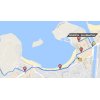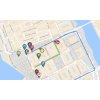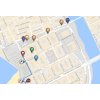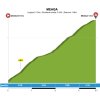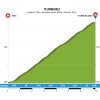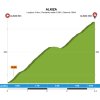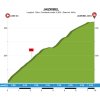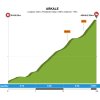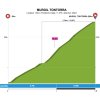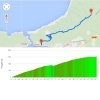Last year, home-rider Mikel Landa forced a crucial selection on the short and sharp Murgil. Only Tony Gallopin and Bauke Mollema were able to follow, while Michal Kwiatkowski and Tom Dumoulin rejoined them on the descent. In the streets of Sán Sebastián Kwiatkowski sprinted to victory.
In 2018, the first climb is crested at kilometre 27. It’s the Meaga, a gentle warm-up climb of 3.7 kilometres at 3.4%. The route continues to the Alto Iturburu and following an 7.1 kilometres climb at 4.9% the riders reach the highest point of the Clásica de San Sebastián at kilometre 59.6. The Iturburu lies at an elevation of merely 550 metres, yet that’s typical for the Basque Country – tough climbs at moderate altitudes. Next up is the Alkiza, a 4.4 kilometres climb at 6.1% with its summit at kilometre 78.9.
With 133.6 kilometres done the Alto de Jaizkibel is crested for the first time. The 7.5 kilometre long climb at 5.8% is a regular one in the Clásica de San Sebastián. The first 3 kilometres are steepest before the climb flattens out towards the top. And on it goes to another iconic Clásica de San Sebastián ascent. At kilometre 156.5 the riders tackle the Alto Arkale, a short uphill drag of 3.2 kilometres at 5.5%.
Following the first Arkale ascent the route takes in a lap with both the Jaizkibel and Arkale for the second time. By now, the finale is well underway. The second time over the Arkale is with 32 kilometres out.
The riders plunge down to San Sebastian and following the passage on the finish line they power on to the steep ramps of the Murgil’s climb. The Murgil Tontorra, as the Basks say, has an average slope of 11.3% and the length is 1.8 kilometres. The steepest ramps of the Clásica de San Sebastián’s last climb are 22%.
Only 7.3 kilometres remaining at the top. First a false flat and then a technical descent into San Sebastián.
Read also results/race report 2018 Clásica de San Sebastián.
Clásica de San Sebastián 2018: Route maps, height profiles, etc.
Click on the images to zoom
